What is Shiso?
One of the most aromatic and popular herbs in Japan is Perilla, called Shiso (シソ) in Japanese. This fragrant herb originating from Asia belongs to the mint family, and is commonly used in Japanese dishes – either fresh or pickled in dishes such as sushi and salads. The herb has large leaves and comes in both green (Aojiso) and red (Akashiso) varieties.

Exploring the Essence of Shiso in Japanese Cuisine
In the world of Japanese cuisine, Shiso is more than just a herb: it’s a symbol of freshness and flavour. It enhances simple dishes by adding depth and making them more visually appealing. In Japan, people often use Shiso as a garnish, as a way to boost flavour, or even as a liner for plates. It represents the Japanese cooking idea of balancing taste and beauty and this has made Shiso an important part of Japanese cooking.
The Unique Flavour Profile

This special herb mixes flavours of citrus, mint, and basil, making each bite unique. Some people even notice hints of anise, which adds a light liquorice touch to dishes. Its unique flavour mixes refreshing, citrusy, and slightly spicy notes.
Fresh leaves are great for salads and sushi. Their slight peppery taste also goes well with fatty fish like tuna and salmon as it balances rich flavours.
Green Shiso vs. Red Shiso: Understanding the Varieties
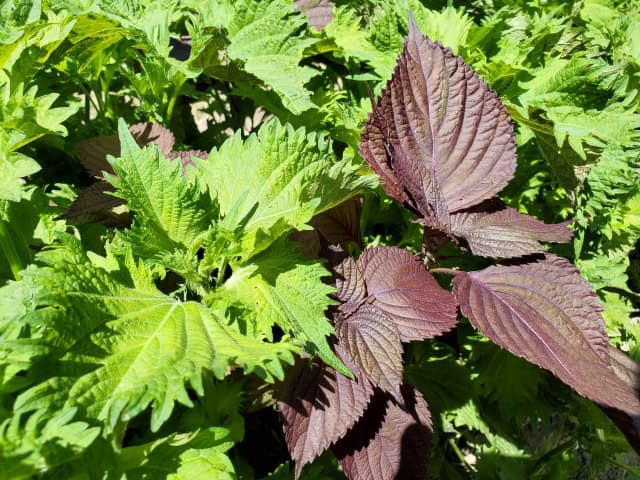
Green Shiso, or Aojiso (青じそ), is the type you usually find. It is liked for its mild taste, and the green leaves have a slightly sweet aftertaste that makes dishes feel fresh. You often see green Shiso on sashimi plates to bring more colour contrasts to dishes.
Red Shiso, called Akashiso (赤しそ), stands out because of its purplish red color and stronger taste. The red leaves have a stronger smell and a bit more bitterness due to something called anthocyanin. While you can use red variety fresh sometimes, it is mostly used for pickling and as a natural food colouring.
The Culinary Journey
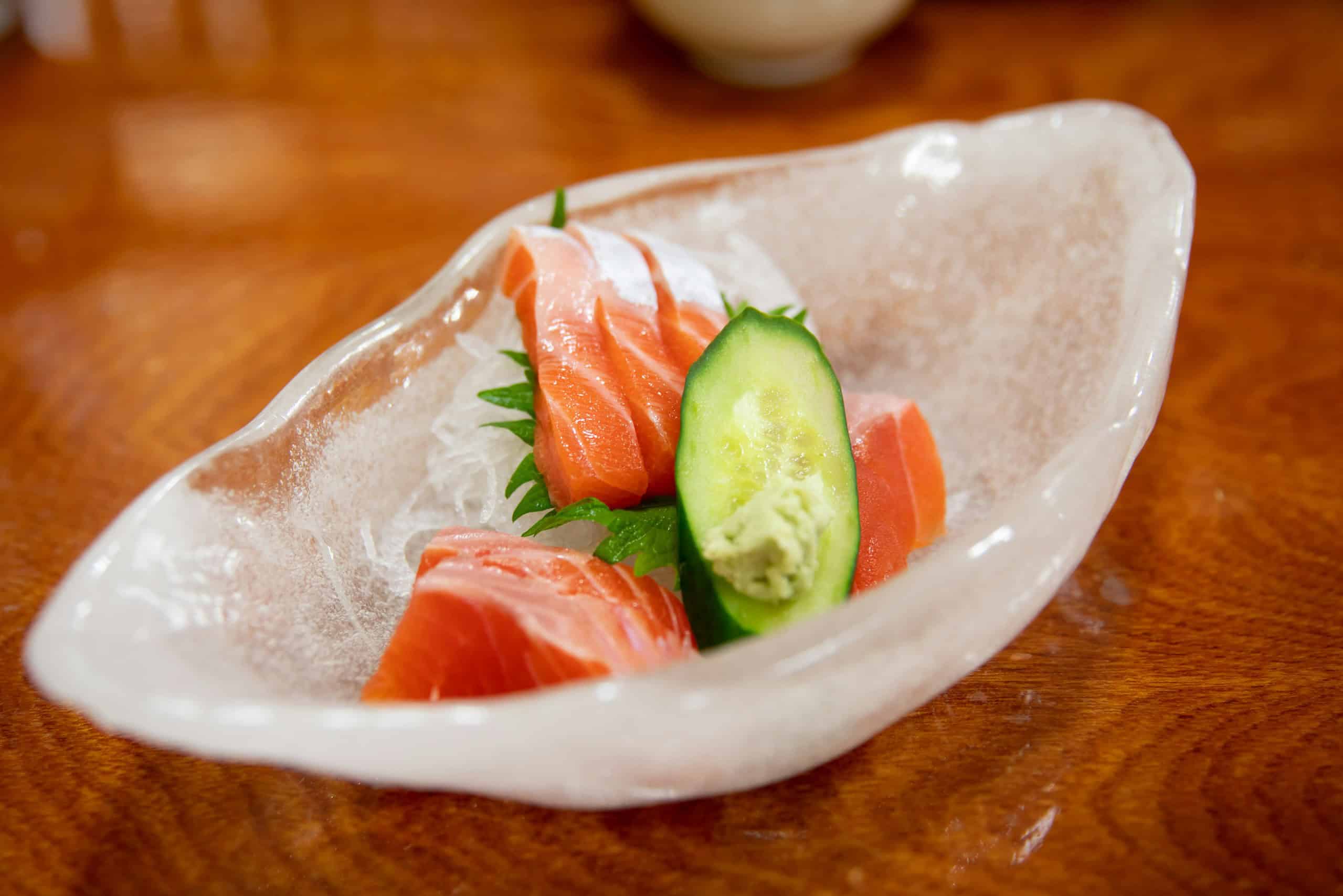
Shiso comes from gardens in Asia and has traveled far in the world of food. It started as a healing herb but has now become a popular ingredient in fine dining restaurants around the globe. Here we take a look at traditional uses and more modern approaches.
Traditional Japanese Recipes
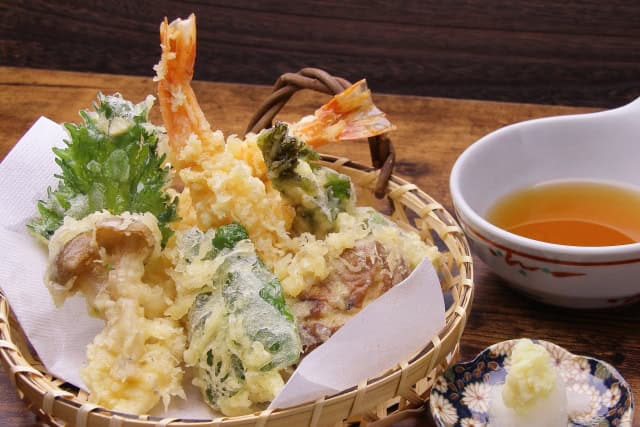
Shiso is more than just a garnish in Japan, and adds a special taste to many food dishes such as:
- Sushi and Sashimi: Shiso leaves, which have antibacterial qualities, often come with sushi and sashimi. On top of helping keep the Sashimi fresh, they elevate the visual aesthetics of the dish.
- Tempura: Whole Shiso leaves are sometimes used in tempura. They are lightly battered and deep-fried, giving a crispy feel and refreshing rich flavour.
- Noodle Dishes: Finely chopped Shiso is a common topping for ramen and other noodle dishes. It is typically mixed with sesame oil and soy sauce for added taste.
Fusion and Innovation: Shiso in Modern Cooking

Shiso has a wide reach in cooking, fitting into many types of dishes. Chefs all over the world love its unique taste, and are often coming up with new recipes that highlight how flexible it is.
When it comes to drinks, Shiso juice, made from red Shiso leaves, is a popular choice as a refreshing beverage and a colorful natural food dye. Bartenders are now experimenting with Shiso in cocktails, giving them a fresh herbal kick.
Beyond Taste: The Nutritional and Health Benefits of Shiso
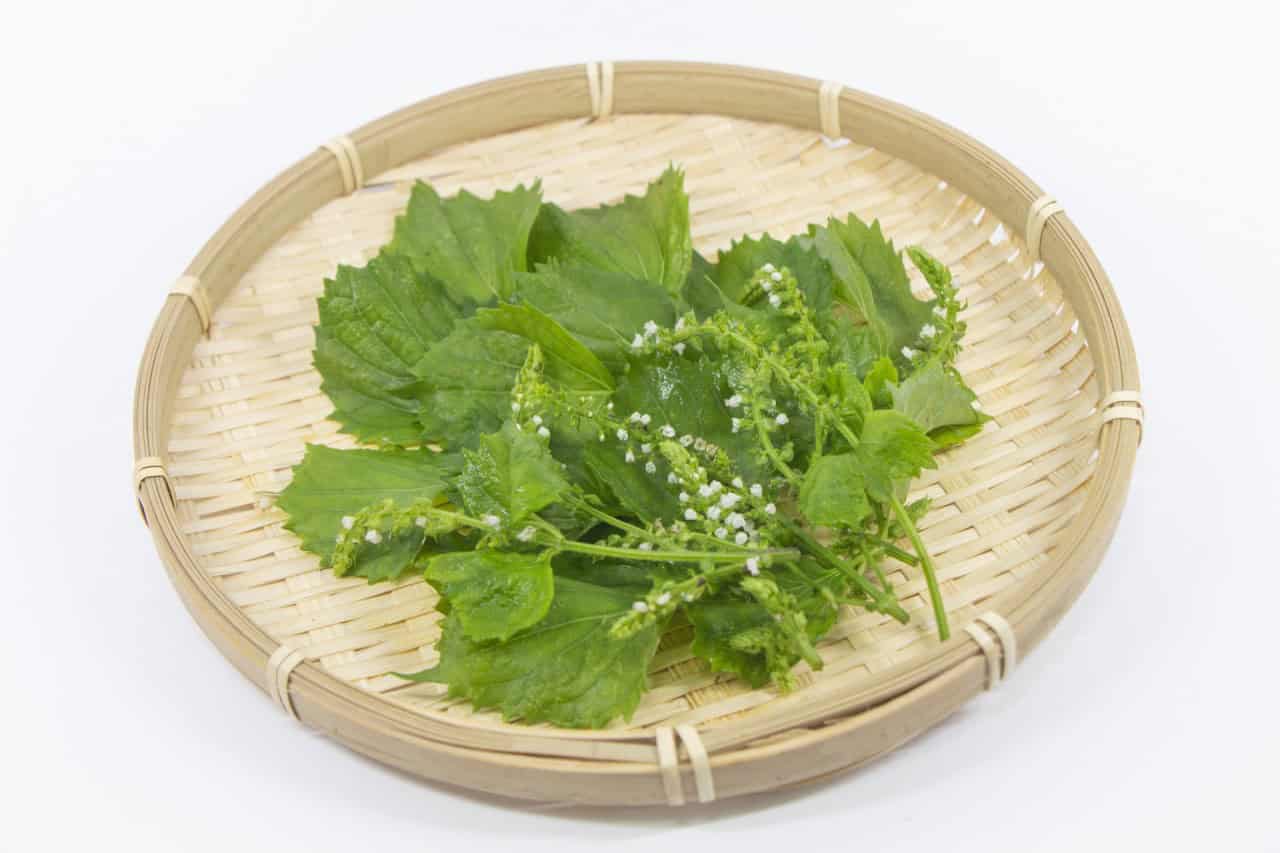
Shiso is not only a tasty herb but also has many health benefits. It is full of antioxidants and important nutrients rich in vitamins A, C, and K, and it can support with building your immune system and with digestive health.
Shiso’s Role in Digestive Health and Immunity
Shiso has a strong connection to better digestive health. In traditional medicine, people think it can help with stomach problems and lessen nausea. Shiso is also rich in vitamin C. This nutrient is important for a strong immune system, so eating Shiso regularly, either fresh or in meals is thought to help improve your immunity.
Antioxidant Properties of Shiso Leaves
Shiso leaves have a lot of antioxidants, which are important for keeping you healthy and feeling good, as these compounds help guard your cells from damage caused by free radicals. Adding fresh produce like Shiso to your diet is a great way to boost your antioxidant levels as Shiso leaves contain many antioxidants.
Cultivating Your Own Shiso Plant
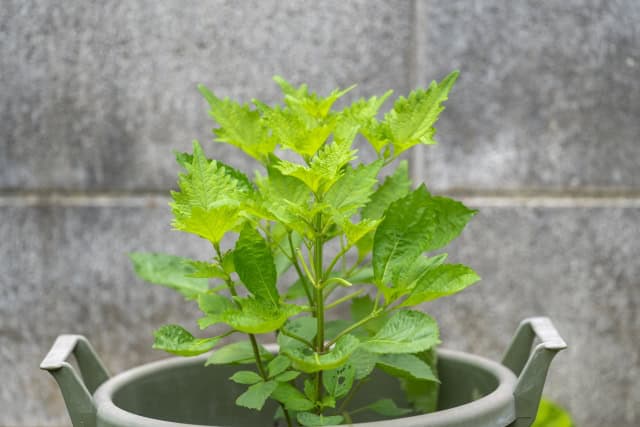
Growing your own plant can be fun and fulfilling, as you can enjoy fresh leaves from your backyard or from an area nearby a sunny window. Plus, it’s not hard to grow this tasty herb, even if you are new to gardening.
Shiso grows best in soil that drains well and in warm weather. Whether you have a large garden or a small balcony, picking your own leaves for meals will bring some additional fun and satisfaction to your meals.
Tips for Growing in the UK Climate

Growing Shiso in the UK is possible with the right care. Even though the climate is mild, their seeds need warmth to sprout, and because of this, it’s best to start with the seeds indoors in early spring. Here’s how we would recommend to grow them:
- You’ll want to plant Shiso seeds in seed trays filled with decent quality seed compost.
- Keep the temperature to around 20°C.
- Once the seedlings are strong and you know there is no more frost forecast, you can move them outside.
- Make sure to water them regularly and place them in a sunny spot. This is going to help your plants grow healthy.
Harvesting and Preserving
To get the best flavours for meals from your Shiso leaves, you’ll want to start harvesting leaves when the plant grows close to 15cm tall. At this point you can cut off the top leaves.
After harvesting, to keep your prized leaves fresh, wrap them in a paper towel until you’re ready to use them. You can also place the leaves in a bag and keep them fresh in the fridge for up to a week or alternatively you can freeze Shiso leaves for later use.
Where to buy Shiso in the UK?
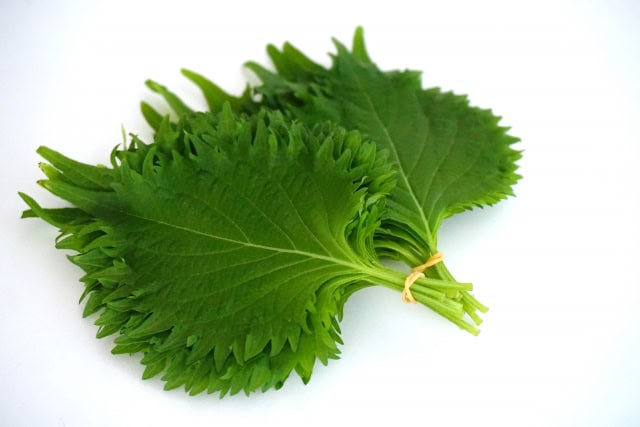
If you’re looking to buy in the UK, there are several Japanese supermarkets in London that stock Shiso. Even if you are outside London, you can purchase Fresh 15 pcs Shiso from the online Japanese supermarket Waso, which offers free delivery across the UK.
Incidentally, in Japan a bundle or packet of green shiso leaves is sold as Oba (大葉) at stores including supermarkets, where Oba is the product name for green shiso leaves.
Frequently Asked Questions
Can Shiso be Used in Non-Japanese Dishes?
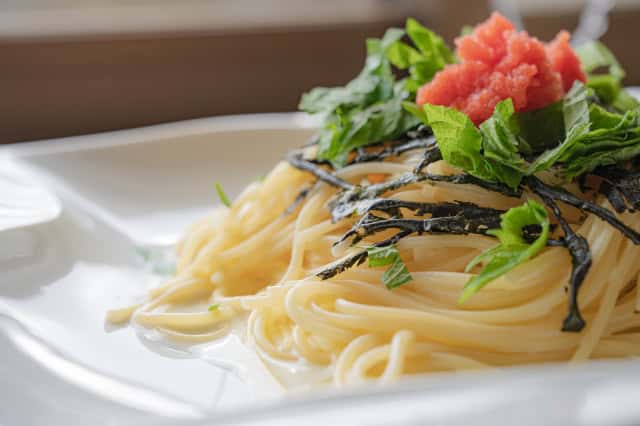
Shiso is a very flexible herb, and it is not only used in Japanese cuisine, but also often used in pasta dishes. It works well with Southeast Asian cuisines as well, and this aromatic herb can enhance fusion dishes and even cocktails.
What Are the Best Pairings for Shiso in Japanese Cuisine?

It goes great with sashimi, especially fatty types like tuna and salmon.

It also works well with rice dishes, like onigiri or inari sushi, so you can often find it in summer rolls and bento boxes.


